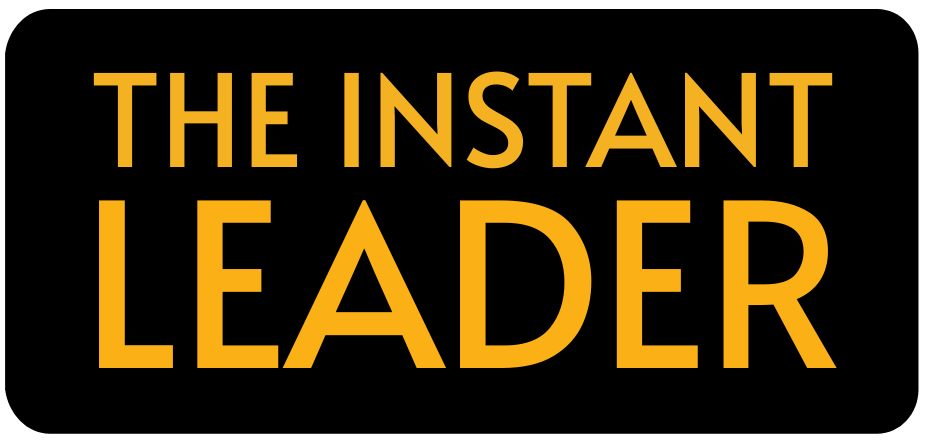A David Among Goliaths
It's Monday morning, and you're staring down a boardroom table lined with years of experience and titles that could intimidate anyone. You're the David in a room full of corporate Goliaths. The pressure's mounting, and in the pit of your stomach, there’s a battle going on between butterflies and a sense of imposter syndrome. It's your turn to lead the meeting, and every pair of eyes—attached to formidable minds and impressive CVs—is fixed on you.
You're doing your best to hide your nerves but to say it's distracting is an understatement. You've suddenly become extremely self-conscious, thinking about your posture, your voice, where you look and how you look. All this while doing your best to focus on the task at hand - running an effective and productive meeting that doesn't end up labelled as a waste of time by those in attendance.
But fear not, because if you follow the practical steps outlined below, you'll soon go from feeling like a deer caught in headlights to feeling relaxed and confident in your ability to chair meetings with professionalism and poise.
The Instant Leader's Guide to Steering the Ship
When chairing a meeting with those who outrank you, or any meeting where there's nervousness about leading well, it's because you're making it about you.
More specifically you're worried about what others think about you. This self-focus has the potential to turn into a self-fulfilling prophecy. Worrying about your own performance can manifest itself in micro-behaviors that cause others to notice your nervousness.
Instead, you want to shift away from trying to control other's perception of you, and towards the outcome.
So what is the outcome? If you don't know then this is the place to start.
Definition Of Done
Ask yourself: what's the definition of done (DOD) for this meeting? What has to happen for the meeting to be a success?
Here are some examples:
- Starting on time and finishing on time
- Agreeing on a particular course of action - sometimes the win here is agreeing on the next immediate action, especially if the topic is a big one
- Giving opportunity to the less out-spoken individuals to contribute. Saying something like "Julia, we haven't heard from you yet, would love to hear what your thoughts on this are?"
- Keep the meeting on topic. It's easy for discussions to go off on tangents, especially with external processors in the room. The skill here is to listen to what is being said, whilst remembering the agenda item you're on and bringing it back to the point, "That's a great thought Steven, so going back to [topic], how can we move forward?"
When debates arise, you can guide the group back to the agenda with a bit of humour. "Looks like we've got enough opinions here to start our own talk show, but let's steer back to the main topic."
- People leave the meeting with more clarity than when the meeting began, "Is everyone clear on the things we've discussed?", "Who needs more clarity on this?"
Prepare Well & Set The Tone
Meetings run more efficiently when relevant information is provided beforehand. Set a clear agenda and distribute it in advance. This shows respect for their time and expertise and allows them to prepare—which they’ll appreciate.
Meetings become inefficient when the thinking happens in the meeting itself, instead of in advance. Sometimes this can't be avoided (some people don't read what you've sent them), but at least you've done your part.
As you officially start the meeting, establish some ground rules. Be firm but courteous. Let the group know you’ll be directing the discussion to ensure every voice is heard, and decisions are made efficiently. You can use some variation of "As chair my goal is to keep us on track and on point, so if I interrupt anyone, understand it's because I want to make sure we have enough time to cover every item on the agenda".
Acknowledge and summarise key points throughout to show active listening and keep the meeting focused, saying something like "So what we're saying is...". This will demonstrate your leadership without needing to flex any authoritative muscle.
Pro-Tips
- Provide positive feedback. When a team member contributes effectively, an affirming comment like, "Great point, John. That approach aligns well with our strategy," can boost morale
- Close the meeting with clear action items, assigning tasks with deadlines. This clarity shows your decisiveness and planning skills
- Practice active listening. Reflect on what is said before responding, showing that you value their input. The slower you reply, the more your response comes across as well thought-through
In all these scenarios, remember that leadership isn't about being loud and expressive. It's about influencing others, which you'll do when you apply the suggestions in this article.
Onwards
You're now better equipped to chair a high-profile meeting, and as you gain more experience, it'll start becoming more natural to you. Your internal posture will shift from feelings of inadequacy to productivesteady confidence. And this will be backed up by the way you lead others towards more effective and producing meetings.
"Leading a meeting effectively means more listening and learning than talking and asserting." — Michael Hyatt







